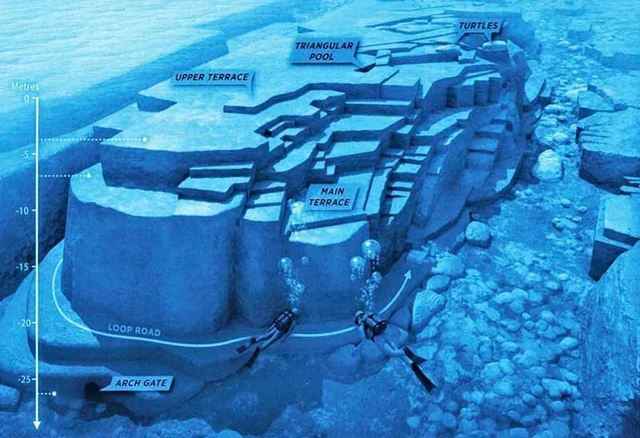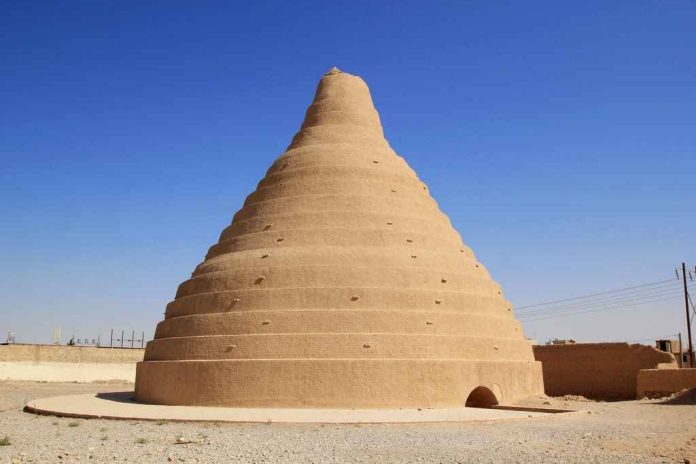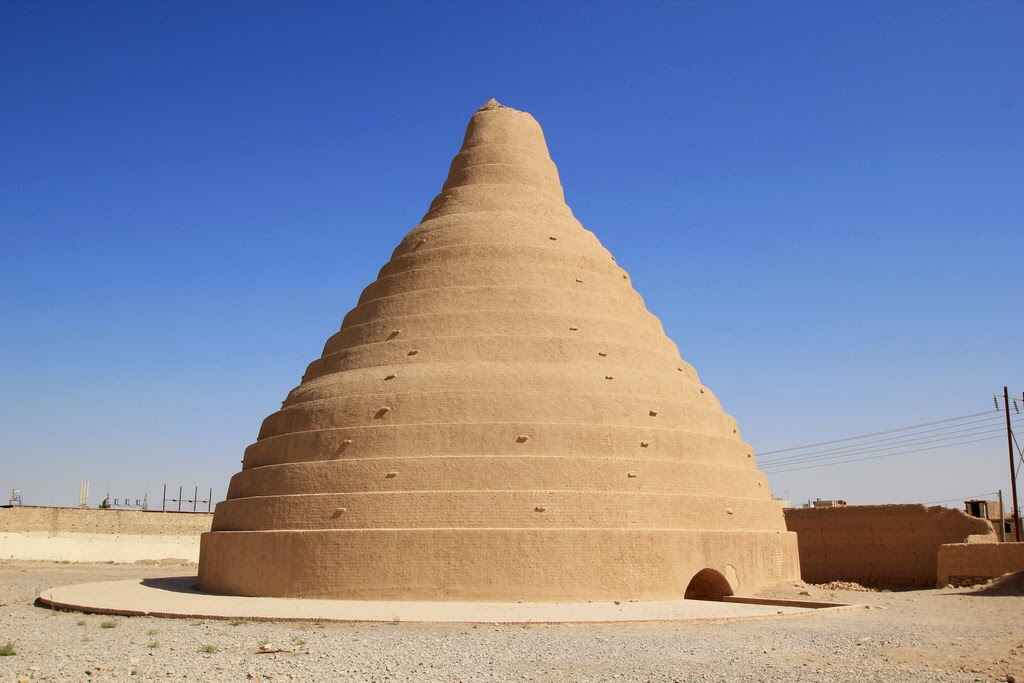Since 1987, when this underwater monument was discovered off the coast of Yonaguni Island in Japan, the gigantic stone formation, submerged under some 25 meters of ocean, has puzzled researchers and explorers alike. The monument is armed with sharp angles and terraced steps that, in fact, place it just at the limit of definition between a natural wonder and something fashioned by human hands in antiquity. Is it really an artifact of some lost civilization, or is it only a natural geological formation? And it goes on, with experts and curious minds debating over this. Let’s dive into the mysteries of the Yonaguni Monument: its origin, structure, and the theories that keep the world interested.
The Yonaguni Monument
The Yonaguni Monument is the most fascinating underwater discovery of the 20th Century. Situated near the small island of Yonaguni in Japan’s Okinawa Prefecture, this underwater formation has amazed not only explorers but also researchers. It was accidentally discovered in 1987 when a local diver, Kihachiro Aratake, found the monument lying at approximately 25 meters under the sea. What Aratake stumbled upon looked to be a massive stone formation, with sharp edges and terraces that seemed uncomfortably close to man-made structures.
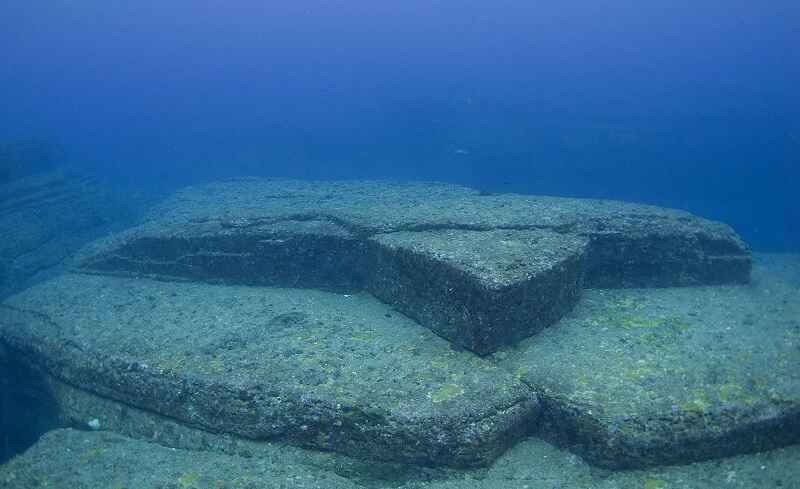
At first glance, the Yonaguni Monument looks like a very old pyramid and arouses many speculations right off the bat. Some think it might be the work of a lost civilization—perhaps thousands of years in the past—while others argue that it’s nothing more than a natural formation, sculpted by ocean currents over millennia. The mystery grows when one looks at the monument’s exact angles and unique carvings, which are indicative of a skill level beyond nature. It is that true mystery: whether it is of natural origin or manmade, that keeps the Yonaguni Monument full of attention and excitement with experts coming from around the globe to dive into its waters and reveal the truths below.
Discovery: The Unintentional Find
The Yonaguni Monument story first surfaced in 1987 when a diver, Kihachiro Aratake, entered the waters off Yonaguni Island in search of new diving spots to attract tourists. But what he encountered was something far from the ordinary. At a depth of approximately 25 meters, Aratake came across an enormous terraced stone structure where the geometric form and sharp angles clashed with the natural shape of the seafloor. This edifice is more than 100 meters long and built of flat platforms, stair-like terraces, and linear walls that seem to challenge known explanations.
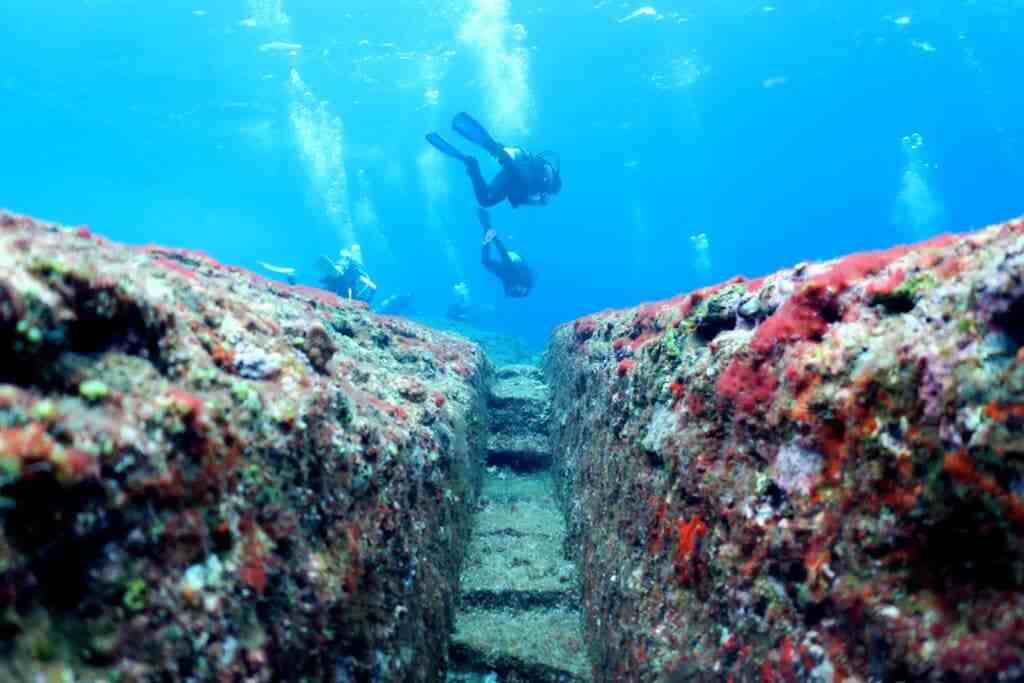
Word of Aratake’s find traveled quickly and fascinated both popular and scientific interest. The sheer size and meticulousness of the Yonaguni Monument has led many to suggest this could be remains from an ancient, lost civilization that was swept underwater thousands of years ago. This was made by the similarities of the monument with other well-known architectural forms, in this case, the step pyramids of Mesoamerica and the Mesopotamian ziggurats. The wildest went so far as to establish that the monument could have belonged to the mythical Mu, a sunken continent often compared to Atlantis.
For this reason, the Yonaguni Monument did, however, ignite intense controversy as well. The skeptics claimed that this was no more than a natural formation; created by tectonic activity and the relentless forces of erosion over countless millennia, this is what created the region’s history of seismic activity. This could have caused the stone to fracture in ways that actually mimic human construction. Some people also said there were carvings or symbols on the stone surfaces that seemed like they had been added, so this created another level of mystery associated with the origin.
As the divers and researchers delved deeper into the Yonaguni Monument, nothing became more apparent than the questions regarding its discovery. Whether it was a work of natural forces or ancient human ingenuity, the monument would still be one of the most enigmatic structures ever found beneath the sea.
The Structure: A Closer Look
The structure of the Yonaguni Monument is nothing less than impressive. Over 100 meters in length, the monument consists of huge stone blocks placed to form a series of stepped terraces leading upward to form what looks like a stepped pyramid. The sides of each terrace are quite straight and end in right-angle edges, which defy the natural-formation explanation. These terraces, coupled with flat platforms and what appear to be narrow passageways, have led many to believe that the Yonaguni Monument is the product of human craftsmanship.
Pushing deeper into the structure, one finds large areas of flat stones, some with shallow grooves making them almost look carved in ancient times. These marks, if corroded by the tooth of time and the relentless currents of the ocean, suggest a language lost or some kind of symbolic system that intrigues one into the monument even further. Aspects of scale and precision in construction at the Yonaguni Monument do make comparison to other ancient architectural feats, be it the pyramids of Egypt or megalithic structures à la Stonehenge.
However, it is still unique in its setting underwater, enveloped by mysteries of the deep sea that invite exploration and research. Upon observing the numerous large flat stone faces, one notices that some are etched with many shallow grooves, similar to the look of ancient carvings or hieroglyphs. These inscriptions suggest that a lost language or symbol system may be possible and add to the allure of the monument, akin to the cryptic inscriptions presented on the Moai Statues of Easter Island.
Theories and Controversies: Man-Made or Natural?
The Yonaguni Monument has been much debated among scholars, and two basic theories have arisen about its origins. On one side, believers in this theory argue that the monument is a remnant of an ancient civilization that might date back over 10,000 years. They point out the precise angles, the stepped terraces, and the possible carvings as evidence of human craftsmanship. Among those who advocate this alternative interpretation, it has been proposed that the Yonaguni Monument may have been an artifact from a lost, prehistoric civilization—one which had once flourished and later become engulfed and inundated during the closing stages of the last Ice Age.
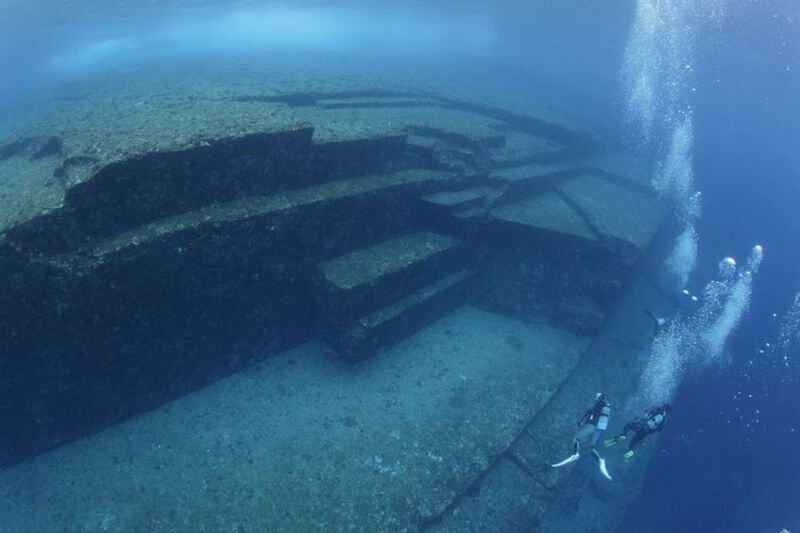
On the other side are theories suggesting that the Yonaguni Monument is a natural formation, shaped by geological processes spanning millions of years. As far as the features of the monument go, from their viewpoint, straight lines and sharp angles could be features of tectonic activity and fracturing of sandstone as well, which are all-natural events. Ocean currents can be seen as a lead point in carving the structure into what it is now—a man-made-looking illusion. This ongoing debate epitomizes the enigmatic nature of the monument, with both sides of the debate argued efficiently but none giving a final answer that would lay the mystery to rest.
Skeptics claim that the structure was formed by geological processes over millions of years, much like a number of theories posed within the Silurian Hypothesis, in which advanced civilizations could have existed long ago before civilization was ever recorded in our histories.
Cultural and Historical Significance: Connection to Ancient Japan
The Yonaguni Monument has a cultural and historical significance because it links with Japan’s ancient past. As such, research on this monument suggests that it was probably part of a certain complex related to Jomon culture, which occupied Japan thousands of years ago. Advanced pottery, sophisticated stone tools, and highly complex social systems are aspects for which the Jomon people are known, possibly indicating that they could construct large stone monuments such as the Yonaguni Monument.
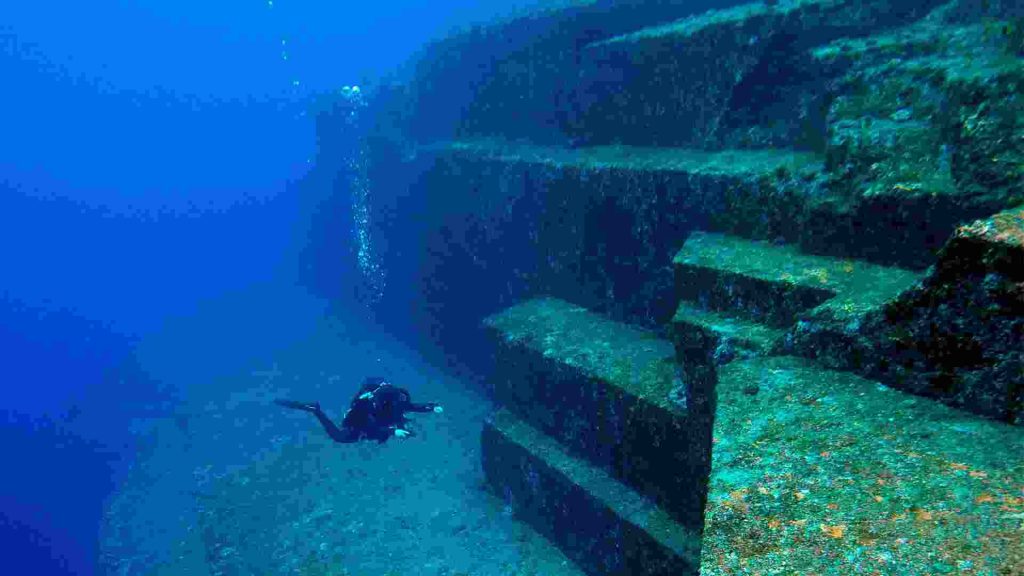
This theory becomes quite convincing when considering the claimed carvings and symbols placed on the surfaces of the monument that some believe can resemble ancient Japanese script or iconography. These possible links to Japan’s ancient history have given the enigmatic structure an added layer of mystery—whether the Yonaguni Monument is the missing link to understanding early development in Japanese civilization. But such lines of argument remain speculative, since the harsh underwater environment has made it hard to get very clear evidence. Yet, this does not stop human interest and debate as to whether the Yonaguni Monument might, indeed, point to a forgotten chapter in the history of Japan.
Modern Exploration and Research: Diving into the Unknown
The Yonaguni Monument has in recent years been a place of modern exploration and research, attracting a lot of divers, archaeologists, and scientists from all over the world. Armed with cutting-edge technology—namely, high-resolution sonar and 3D mapping tools—these explorers try to unravel its mysteries of origin and purpose, contributing very much to the field of underwater archaeology. Divers often dive in the waters around Yonaguni Island and take close-range photos and videos of the monument to reveal details of the complex’s structure.
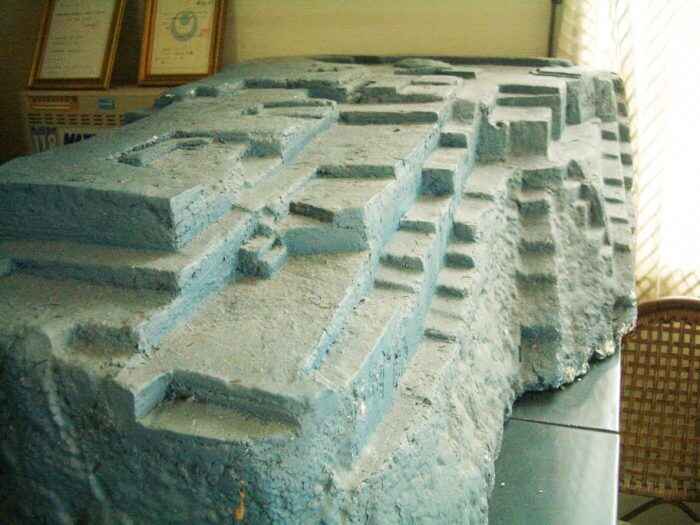
One of the most fascinating findings has been the discovery of what some consider to be supplementary structures around the main monument. Although smaller, these nearby formations also exhibit similar geometric patterns and seem to indicate that the Yonaguni Monument might just be one part of an even larger complex submerged in this area.
These discoveries are still being debated on whether or not it proves the theory for an ancient civilization submerged in water or if it just adds to the many other naturalistic theories about how the site was formed. Despite the challenges that the underwater environment poses, current exploration of the Yonaguni Monument seems to promise even more information on the enigmatic construction, deepening our understanding of what lies beneath the surface and what secrets the monument is still able to retain.
Frequently Asked Questions (FAQs)
1. What is the Yonaguni Monument?
The Yonaguni Monument is an underwater structure located off the coast of Yonaguni Island, Japan. Discovered in 1987, it has sparked debates about whether it is a natural formation or a man-made structure from an ancient civilization.
2. In which country is the Yonaguni Monument located?
The Yonaguni Monument is located in Japan, specifically off the coast of Yonaguni Island, which is part of Okinawa Prefecture.
3. How deep is the Yonaguni Monument?
The Yonaguni Monument is situated approximately 25 meters (82 feet) below the surface of the ocean, making it accessible only to divers.
4. Who built the Yonaguni Monument?
There is a bit of controversy regarding the Yonaguni Monument. The majority of scientists believe it to be an ancient construction, but many still argue that it was formed naturally through geology.
5. What’s so special about Japan’s Yonaguni Monument?
Japan’s Yonaguni Monument is exceptional in the sense that it is underwater, built from large stone structures, and its origin is still a question of debatable discussions, much like the other old wonders of the world, like the Pyramids of Egypt.
The Lasting Mystery of the Yonaguni Monument
Yet the Yonaguni Monument remains in an enigmatic position, still one of the top underwater sites around the world that defies a simple explanation and tosses our concept of history out the window. The monument is, after decades of research and exploration, still shrouded in mystery, with each new discovery raising more questions than it answers. The debate over its origins—whether it is a natural formation or the remnant of an ancient civilization—rages on without apparent end, keeping the Yonaguni Monument firmly in the spotlight of academic and public interest.
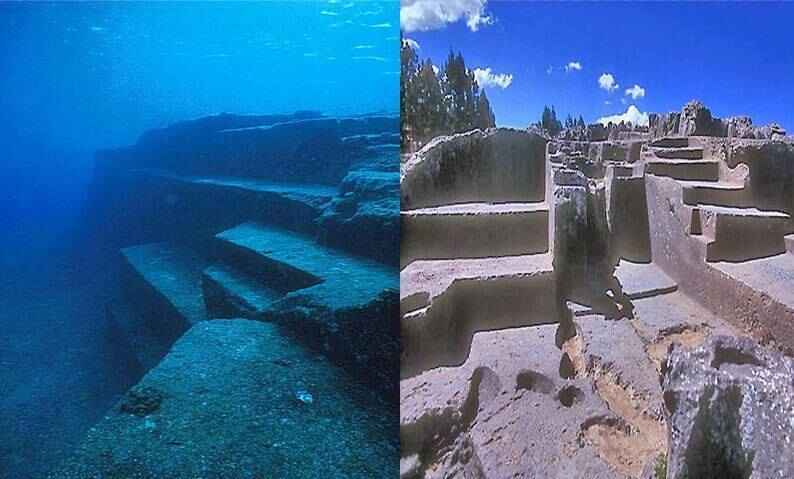
And what makes the Yonaguni Monument truly fascinating is how it blurs the line between myth and reality, science and speculation. It provides a testimony to human interest in the unknown, and a symbol of our constant quest toward revealing the secrets of the past. And for the people of Yonaguni and the entire Okinawa region, the monument has increasingly become a source of local pride as tourists and researchers throng to witness its enigma firsthand. As long as the exploration of the Yonaguni Monument continues, it promises to remain a focal point for those drawn to the wonders of the deep, and the mysteries that lie hidden beneath the waves.
Use of Our Content
⚠️ Content on “Mystery Uncover” is protected under US and International Copyright Laws.
You are free to reuse, republish, and share our content by giving credit to the source as Mystery Uncover with a link to the original material on mysteryuncover.com.


